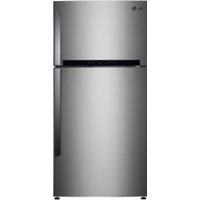which gases are emitted through refrigerators and air conditioners
A refrigerator emits a great many different gases and some are harmful. This article will discuss which gases are emitted through an air conditioner, their effects on the environment, and some potential solutions that may help prevent these effects.
Image source: https://www.reliancedigital.in/
The main gas emitted from most appliances is carbon dioxide (CO2), which is a greenhouse gas that causes climate change when in excess. In this article it will also be discussed what other gasses are emitted by refrigerators and air conditioners, as well as ways to reduce them before they cause too much harm to the environment.
Image source: https://www.amazon.com/
A refrigerator emits many different gases. They include the following: Carbon dioxide (CO2) is emitted from when the electricity is used in the refrigerator. It is a harmful gas that causes climate change if emitted in high amounts.
Image source: https://pinterest.com/
CO2 can be reduced by using a solar-powered refrigerator or compressor-free refrigerator, as these are not run on fossil fuels and thus emit no greenhouse gases.
Image source: https://www.flipkart.com/
· Ammonia (NH3), also known as “R717”, is released by refrigerant during use and causes irritation of the eyes and respiratory tract.
Image source: https://www.reliancedigital.in/
It can be reduced by using a refrigerator or air conditioner that is only used when necessary and by keeping the volume of ammonia at 20% of the rated capacity.
Image source: https://rtings.in/
This low level of ammonia is also possible with ammonia-free refrigerants, although some refrigerants, like R22, leaks through.
Image source: https://www.smartprix.com/
· Carbon monoxide (CO) is emitted from carbon monoxide detectors when they detect fumes from a fridge/air conditioner.
Image source: https://www.shopclues.com/
These fumes come from the exhaust gasses rising up to the ceiling inside the appliance and can trigger them to go off. The fumes are so harmful that they can cause death if a healthy adult is exposed to them.
Image source: https://www.smartprix.com/
This gas can be avoided by using a carbon monoxide detector in the room where the appliance is used, or where the exhaust gasses may rise up to.
Image source: https://www.shopclues.com/
· Hydrocarbons are emitted from when the appliances are running and burning gas. Hydrocarbons can cause a variety of effects ranging from irritation of eyes and nasal cavity, asthma, to decreased exercise capabilities.
Image source: https://www.reliancedigital.in/
They can be reduced by using an appliance that runs on propane or natural gas, or by using an energy efficient appliance (such as an electric or solar-powered refrigerator/air conditioner).
Image source: https://pinterest.com/
The hydrocarbon gases in the air coming out of heating units also can cause increased risk of fire in drywall and furniture.
Image source: https://www.amazon.com/
· Noxes or nitrogen oxides (NOx) is released into the atmosphere by containing harmful amounts of carbon dioxide. They cause the air and water to become more acidic, which makes breathing harder for humans and causes environmental damage. NOx can be reduced by using a non-fossil fuel refrigerator/air conditioner, such as one that runs on solar or propane/natural gas.
Image source: https://www.reliancedigital.in/
· Formaldehyde (CH2O) is emitted when large amounts of oxygen interact with refrigerants containing ammonia (R717). Formaldehyde is a deadly gas that can affect the human respiratory system and leads to cell death if in high concentrations. It can be reduced by using an ammonia-free refrigerant.
Image source: https://www.flipkart.com/
· VOCs are released when solvents are released into the air during use of appliances like refrigerators, etc.











Komentar
Posting Komentar